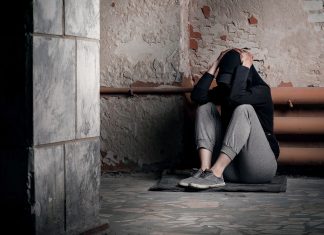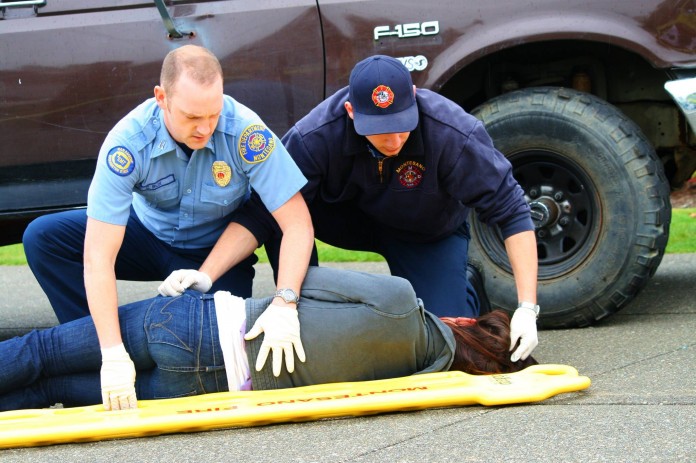
By Chelsea Royer
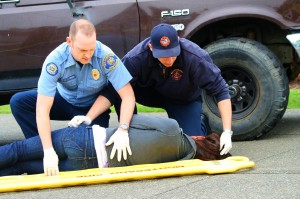
The stretch of time between Memorial Day and Labor Day represent the 100 deadliest days of summer for teens, which include the top 10 most dangerous days to be driving. Summer sun brings out the wanderlust in people and teens celebrate their freedom from the classroom in as many ways as they can dream up. Unfortunately, many teens are all too willing to celebrate their freedom illegally, combining risky activities with alcohol or marijuana before driving back home under the influence.
Every 32 minutes, someone in the United States perishes due to impaired driving. In the U.S., 42% of traffic fatalities are a result of someone driving under the influence. In Grays Harbor, that number is at a staggering 96%. Susan Bradbury of the Grays Harbor Sheriff’s Department is out to change those statistics.
For the sixth year, Susan has been running the Every 32 Minute program in Grays Harbor. This program is rotated through Grays Harbor high schools and takes two days to complete, though the planning and preparation begins months in advance.
Every 32 Minutes simulates a car accident, due to driving under the influence, using students from the high school at which the program takes place. One student is taken to the jail as the impaired driver while his passengers are either declared dead or loaded in the ambulance with injuries. During the simulation, students are kept overnight with no access to the digital world where they might contact their friends. Even the parents go through the motions of receiving an evidence bag and choosing burial clothing. Throughout the course of the day surrounding the car wreck, a student is marked as “dead” every 32 minutes and carried out by paramedics as a friend or family member reads their obituary over the intercom. These students are dressed in black garb and sent back to class as a silent but visual reminder.
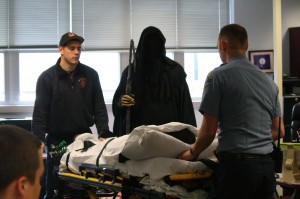
“Some students mock and laugh during the course of this simulation, but most pay attention. There are few dry eyes during the assembly,” says Susan. “Statistics are that if you get tears out of a teen, you’ve impacted them for three months. This simulation is as close to real as you can get. It’s powerful.”
The data backs up the success of the program. After the second year, the Sheriff’s Department saw a rapid decline in DUI’s. “Our big concern are DUI’s,” explains Susan. “Number two is texting, though that is almost a tie with DUI’s.” Despite the popular message that the most dangerous days on the road lie within Memorial Day and Labor Day, Susan says the opposite is true here in Grays Harbor. Since the Every 32 Minutes program began, the number of collisions and minors in possession dropped about the time of the 32 Minutes event before picking up again at the end of summer.
Philip Royer, Director of Social Work Services at Grays Harbor Community Hospital, says that the staff always braces themselves for the aftermath of holiday celebrations where teens and adults alike tend to make their worst decisions. However, he also explains that in some ways the beginning of the school year seems worse for teens than graduation. “For kids who are despairing or suicidal, being at the front of the year and looking down tend to wonder if they can make it. They are as much or more at risk as the kids who are just out there partying. I think the thing to pay attention to is not so much that kids are using illegal substances but to really find out why,” says Philip, who is a parent himself. “Drugs and alcohol are often symptomatic, but can also be a behavior response – kids do what they see parents doing. Also, kids think they are indestructible. As humans, we tend to think, ‘that won’t happen to me’ or ‘I’m perfectly fine to drive.’”
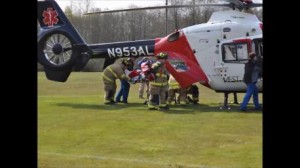
Both Susan and Philip agree that one of the best things a parent can do is to bring up the topic of substance use to your kids. “Bring it up and tell the truth,” says Philip. “Mentioning it once doesn’t count. People, and teens especially, don’t hear things the first time – particularly if they don’t want to hear it or if it makes them uncomfortable. It isn’t an issue you can tip-toe around, you have to be blunt. Real communication is not easily done and takes effort.”
Susan and Philip also agree that one of the best things you can do is to give your kids a way out. If they or someone they are with make a mistake with alcohol or drugs, it is best that they know they can call a parent and get a ride home without repercussions. The educators say that teens need to know their parent will come and get them first and get them home safe and ask questions later.
Most importantly, the talking needs to begin early. “I tend to see the back end of people who are isolated, alienated and have destroyed their health because of drugs and alcohol,” explains Philip. “For most of these people, the habits began in relative childhood. I think society underestimates the age an addiction can begin. It starts younger than you think and age 15 is too old to begin talking with your kids. Start talking sooner.”
Summer is a great season for fun and outdoor activities, but also a good time to be proactive about talking with your teenager. Know who they are with, where they are going, and that they know you are a safe person to call if they do make a mistake. The more often you bring it up, the more likely they are to hear.
For additional resources, please visit the My TOWN Coalition website or www.starttalkingnow.org.




































